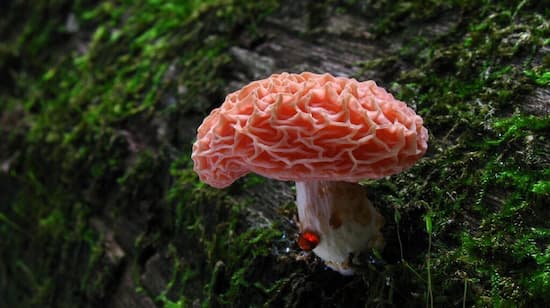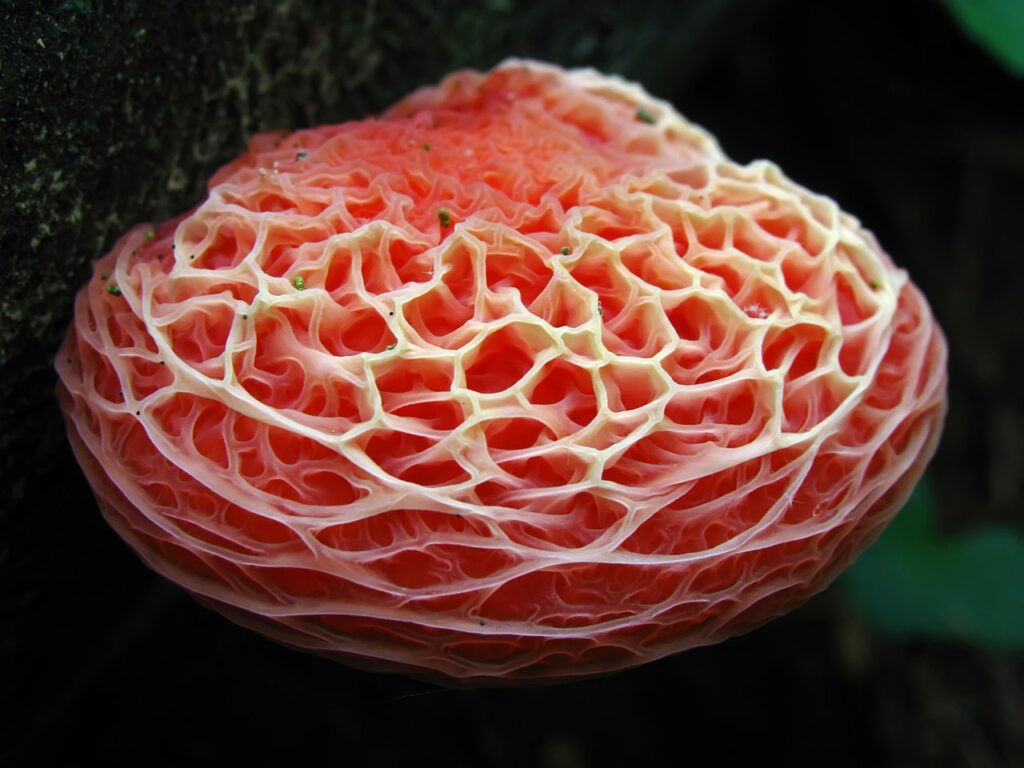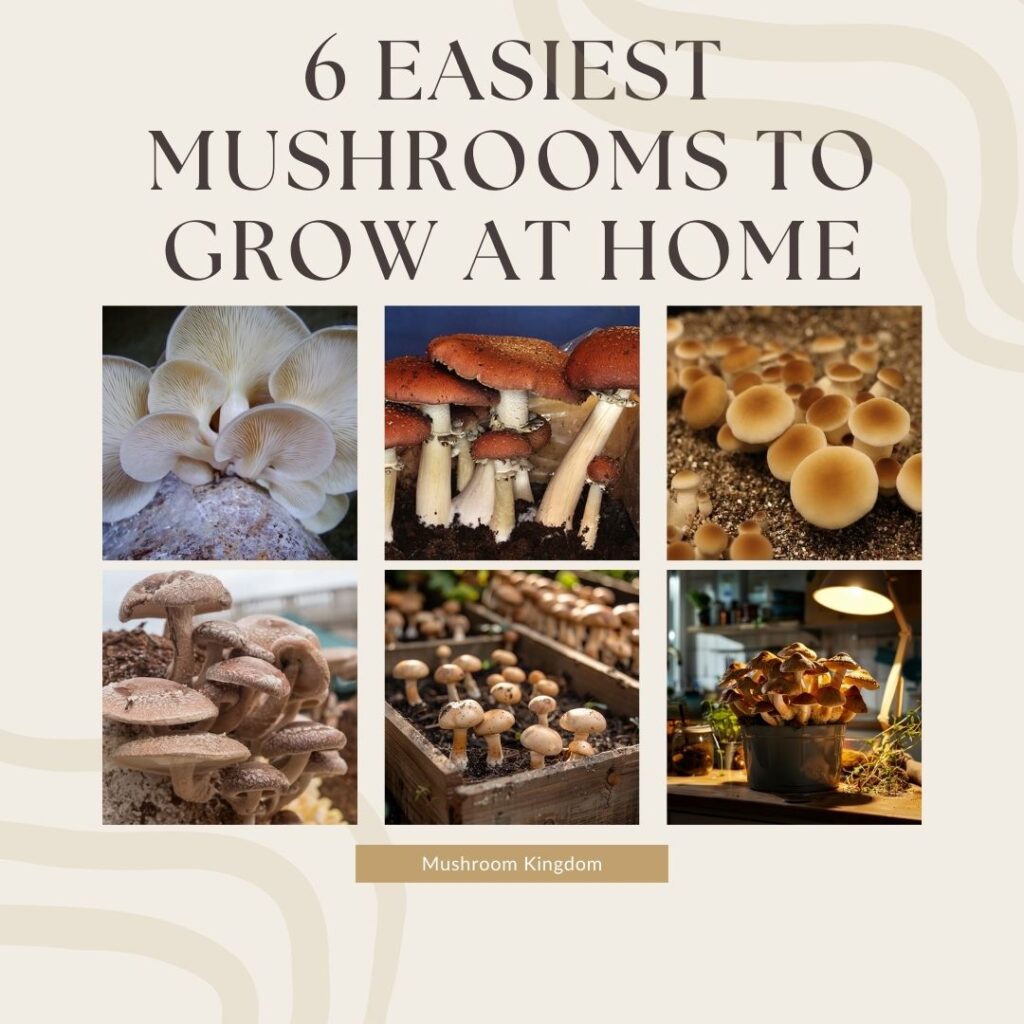The Rhodotus palmatus mushroom, known for its unique rosy cap with intricate vein-like patterns, is a rare and captivating fungus found on decaying hardwood.
In this article, readers will learn how to identify this mushroom, its edibility and toxicity, variations, and the fascinating etymology behind its name.

What is Rhodotus Palmatus Mushroom?
The Rhodotus palmatus mushroom, often called the “rosy veincap,” is a fascinating and distinctive fungus. This mushroom belongs to the Rhodotus genus and is notable for its unique appearance and rarity.
Found primarily in temperate regions, it thrives in decaying hardwood, particularly elm and maple trees. Its cap, which is adorned with intricate, vein-like patterns, sets it apart from other mushrooms.
This eye-catching feature not only makes it a subject of interest for mycologists but also for amateur mushroom hunters and nature enthusiasts.
How To Identify Rhodotus Palmatus?
Identifying the Rhodotus palmatus requires a keen eye and attention to detail. This unique mushroom stands out due to several distinctive features, which make it relatively easier to recognize for both amateur and experienced mycologists. Here are some key characteristics to help you identify Rhodotus palmatus:

Cap
The cap of the Rhodotus palmatus is its most striking feature. It ranges from 2 to 10 centimeters in diameter and has a rosy to pinkish hue.
The surface of the cap is covered with a network of raised, vein-like ridges, giving it a distinctive, wrinkled appearance. This veiny texture resembles a network of veins or lines on a leaf, making it quite unique among mushrooms.
The cap’s color can sometimes shift slightly depending on environmental factors, ranging from deeper pinks to lighter salmon tones.
Gills
Beneath the cap, the gills of wrinkled peach are free and not attached to the stem. They are pale pink to salmon in color and closely spaced, providing a delicate and somewhat intricate look.
These gills produce spores, which are crucial for the mushroom’s reproduction. The free gills, which do not extend down the stem, help differentiate it from other species where the gills are attached or decurrent.
Stem
The stem of Rhodotus palmatus is relatively short, measuring 3 to 6 centimeters in length and about 1 centimeter in thickness. It is often the same color as the cap or slightly lighter, and it can be smooth or slightly fibrous.
The consistency of the stem is typically firm, and it may have a slightly swollen base. Unlike many other mushrooms, the stem of Rhodotus palmatus lacks a ring or annulus.
Spore Print
Taking a spore print can also aid in identification. To do this, place the cap, gills down, on a piece of white paper and cover it with a bowl to create a humid environment.
After a few hours, the spores will fall and leave a print. The spores of wrinkled peach produce a salmon-pink print. This spore color is an additional clue to help confirm the mushroom’s identity.
Habitat
Habitat is another critical factor in identifying Rhodotus palmatus. Look for this mushroom on decaying hardwood logs, particularly elm and maple, in moist, shaded forest areas. It typically appears in late summer to early autumn.
The presence of this mushroom often indicates a well-decayed, damp wood environment, as it thrives on the nutrients provided by rotting wood.
Additional Tips
When searching for wrinkled peach, consider the following additional tips:
- Season: Late summer to early autumn is the prime time to find this mushroom, so plan your mushroom hunting trips accordingly.
- Geographical Location: While it can be found in various temperate regions, its distribution is patchy, so local mycological guides can be helpful.
- Environmental Conditions: Look for moist, shaded areas in deciduous forests. The presence of decaying logs, particularly those of elm and maple, increases the likelihood of finding Rhodotus palmatus.
Is Rhodotus Palmatus Edible?
When considering whether a mushroom is edible, caution is paramount. The Rhodotus palmatus mushroom, despite its unique appearance, is not considered edible.
While there is limited information on its toxicity, the texture and taste of this mushroom are reportedly unpalatable.
It has a rubbery consistency, and its flavor is often described as bitter or unpleasant.
Is Rhodotus Palmatus Toxic and Poisonous?
The toxicity of Rhodotus palmatus is not well-documented, and there are no known reports of poisoning from this mushroom. However, the lack of information does not guarantee its safety for consumption.
Many wild mushrooms contain compounds that can cause gastrointestinal distress or more severe symptoms, even if they are not classified as deadly.
As a general rule, it is advisable to avoid consuming any wild mushrooms unless they have been positively identified as safe by an expert.
In the case of Rhodotus palmatus, erring on the side of caution and refraining from ingestion is the best practice.
Rhodotus Palmatus Etmology Explained
The etymology of Rhodotus palmatus provides insight into its distinctive characteristics. The name Rhodotus is derived from the Greek word “rhodon,” meaning “rose,” which refers to the pinkish hue of the mushroom’s cap.
The species name, palmatus, comes from the Latin word “palmatus,” meaning “palmate” or “hand-shaped.” This name alludes to the intricate, vein-like patterns on the cap that resemble the lines on a palm or hand.
Together, the name Rhodotus palmatus beautifully encapsulates the mushroom’s most notable features: its rosy color and the unique veining on its cap.
Conclusion
In conclusion, the Rhodotus palmatus mushroom is a captivating specimen in the world of fungi. Its distinct appearance, characterized by a rosy, veined cap, makes it easily identifiable.
Although it is not considered edible and its toxicity remains uncertain, its uniqueness and beauty make it a worthy subject of study and admiration. As the only species in its genus, Rhodotus palmatus stands out in the diverse and fascinating world of mushrooms.
So, the next time you venture into the woods, keep an eye out for this remarkable mushroom and enjoy the natural wonder it brings to the forest floor.


